"Vermeer este mai presus decat toti pictorii lumii" - Salvador Dali
Misterul și lumina sunt două progenituri antagonice ale timpului subiectiv, ce coordonează creația acelor artiști înlănțuiți de reverie. Pe de o parte, misterul acoperă esența fragilă care își aduce la viață propriul sine, printr-o naștere dureroasă. Pe de altă parte, lumina călăuzește nou-născutul în călătoria spre subconștientul privitorului, trecându-l peste râul Styx al cruzimii concretizării. Jan Vermeer, pictor olandez al secolului șaptesprezece, ne fascinează astăzi cu misterul său înnăscut ce îl învăluie precum o capă protectoare, așezată în calea curiozității potențial vătămătoare pentru un spirit sensibil. Mai mult, ne captivează cu spectrul său de culoare și lumină, care bântuie panza-gineceu a penelului și inspirației. Acest personaj, inclus în galeria selectă a pictorilor Epocii de Aur a barocului olandez, este la fel de eluziv precum o stea nevăzută: îi putem calcula mișcările și influența concretă a acestora, dar nu putem privi direct în furnalul, în inima care generează toate procesele.
Cel ce urma să fie supranumit Sfinxul din Delft a fost o figură discretă în timpul vieții. Născut în familia unui lucrător din clasa de mijloc (devenit ulterior dealer de tablouri, chiar înainte de nașterea fiului său), tânărul Jan s-a aflat permanent sub influența indirectă a mediului artistic, astfel că a decis să se dedice picturii. Nu ne este foarte clar cum a reușit Vermeer să se înscrie în ghilda pictorilor, fără o pregătire prelabilă concretă, dar este posibil ca evenimentul să fi avut o conexiune cu ocupația tatălui său. Jan ar fi putut fi un foarte bun autodidact, admis pe baza abilităților sale artistice, iar evenimentul a marcat, oficial, aderența tânărului de 21 de ani la universul culorilor. Căsătoria cu Catharina Bolenes i-a asigurat lui Vermeer cadrul intim și liniștit, propice pentru un creator de frumos, protejat financiar de mama noii sale soții.
Universul artistic al lui Vermeer este unul dominat de lumină puternică și figuri feminine, de căldură și serenitate. În numeroase dintre operele sale, pictorul lasă senzația că s-ar afla în continuă adorație față de cadrul intim, familial, în care el insuși se simțea integrat. Atunci când privim un tablou de-al lui Vermeer centrat pe un personaj feminin, misterul intrinsec al artistului pare să iradieze prin toți porii modelului. Să luăm, de exemplu, opera cea mai cunoscută a pictorului olandez, și anume Fata cu turban sau Fata cu cercel de perlă (1665).
Universul artistic al lui Vermeer este unul dominat de lumină puternică și figuri feminine, de căldură și serenitate. În numeroase dintre operele sale, pictorul lasă senzația că s-ar afla în continuă adorație față de cadrul intim, familial, în care el insuși se simțea integrat. Atunci când privim un tablou de-al lui Vermeer centrat pe un personaj feminin, misterul intrinsec al artistului pare să iradieze prin toți porii modelului. Să luăm, de exemplu, opera cea mai cunoscută a pictorului olandez, și anume Fata cu turban sau Fata cu cercel de perlă (1665).
Tabloul captivează privitorul contemporan prin gingășia expresiei unui chip pe care lumina cade ca un fald de rochie pe o coapsă grațioasă, părând să învăluie misterul gândurilor tinerei, subliniind adâncimea privirii și rotunjimea copilarească a ochilor strălucitori. În jurul acestui tablou au fost țesute povești romanțate, care au alimentat, mai apoi, cărți și o ecranizare de succes. Cine a fost misterioasa tânără imortalizată de Vermeer? Să fi fost, oare, tânăra sa servitoare, care îl iubea în secret pe artist, privindu-l cu lipsa de speranță a unei femei condamnate să nu se poată ridica deasupra condiției sociale? Nu vom ști niciodată, dar tocmai acest mister suscită interesul iubitorilor de romanță voalată. Fata cu turban accentuează nu doar înclinația lui Vermeer către reprezentarea femininității calme și fragile, dar totodată enigmatice, ci și sensibilitatea față de culoarea albastru.
Chiar și atunci când nu abundă în tonuri de albastru, precum în Femeie la fereastră (1662–1663), picturile lui Vermeer reușesc, totuși, să captiveze ochiul cu un detaliu bine plasat - un recipient, un articol de îmbrăcăminte, nuanța pereților sau lumina care pătrunde pe fereastră. Paleta coloristică fiind limitată, Vermeer utiliza extensiv pudra semi-prețioasă de lapis lazuli pentru o tentă încântătoare de ultramarin, ceea ce complementa naturalețea conferită de valurile de lumină. În tabloul Lăptăreasa (circa 1658), despre care se afirmă că ar fi fost inspirat de Tanneke Everpoel, una dintre servitoarele familiei Vermeer, nuanța șorțului femeii este atât de intensă, încât generează instant senzația de prețiozitate ce transcede dincolo de lipsa de valoare a respectivului articol vestimentar. Personal, revin adesea pentru a privi intensa nuanță, care îmi pare vie și desprinsă din poveste.
Galbenul se alătură albastrului pentru un duo fertil și cald tipic vermeerian, iar în Femeie cu un colier de perle (1664) domină fără drept de apel cadrul intim al femeii pierdute în reverie și încântare la atingerea prețioaselor ornamente, în lumina zilei.
În tablourile lui Vermeer, spațiul și liniștea, calmul neperturbat, nediluat de realitatea aflată dincolo de pereții locuinței emană modestie și generează senzația de lume ideală, în care evenimentele pot și vor fi ținute în frâu de zâna bună cu numele de 'femeie'. Simultan, deși această lume paralelă guvernată de femei este învăluită de o aură mistică, simțul acut al realității ne înțeapă acuitatea vizuală. Tablourile lui Vermeer sunt pictate într-o manieră care îl integrează pe privitor în procesul de creație, chiar dacă interacționează cu scena prezentată la mult timp de la evenimentul creativ. Asemenea unei entități dintr-o dimensiune spațio-temporală superioară, privitorul simte că se poate afla în trecut, prezent și viitor în același moment, parte integrantă din lumea și misterul lui Vermeer.
În tabloul Doamna cu femeia de serviciu ținând o scrisoare (1666-1667), scena este atât de vivid reprezentată încât privitorul se poate simți integrat ca un vizitator, discutând cu stăpâna casei în timp ce servitoarea acesteia îi înmânează o scrisoare. Sesizăm chiar și faptul că scrisoarea ar fi importantă din atitudinea întrebătoare, plină de interes a doamnei și din luminozitatea hârtiei, elementul central al picturii. Privitorul, acest oaspete extraterestru, se simte integrat în toate instanțele temporale. Se vehiculează o teorie conform căreia Vermeer ar fi recurs la o cameră obscură pentru a conferi o mai mare doză de realism lucrărilor sale. O cameră obscură este un mecanism compus dintr-o cutie neagră de formă paralelipipedică, având o deschidere foarte mică și o lentilă situate în plan paralel față de o altă deschizătură cu un ecran alb sau mat transparent, pe care se poate proiecta o imagine reală și răsturnată. Să fi fost acesta secretul lui Vermeer, personajul captivat de perfecțiune, de acuratețe? O altă trăsătură a tehnicii pictorului este absența desenelor sau schițărilor prealabile din operele sale, de parcă ar vrea sa transmită că își expune trăirile nealterate, nerafinate prin procedee care ar putea distruge impulsul inițial al penelului și al emoției.
Vermeer nu ne oferă niciodată cheia tablourilor sale. Planează un perpetuu mister asupra lor, suntem angrenați în jocul de-a ghicitul privind în ochii femeilor, la mâinile lor, la umbrele și lumina din cameră, la faldurile hainelor și nuanțele înconjuratoare. Privind picturi precum Proxeneta (The Procuress - 1656) sau Diana înconjurată de nimfe (1655-1656), cu grupuri compacte, fiecare personaj are trăirile sale, se integrează în peisaj și totuși se detașează printr-o subtilă introspecție. Adeseori remarcăm siluete masculine, așezate cu spatele către privitor sau dominate de penumbră, părând că cedează prim-planul diafanelor figuri feminine.
Femeie în albastru citind o scrisoare (după 1664) şi Femeie ţinând o balanţă (1665) înfățișează două doamne cu abdomen proeminent, posibil însărcinate, temă pe care niciun alt pictor al vremii nu a mai abordat-o, sarcina nefiind considerată suficient de estetică pentru a fi redată pe o pânză. Este incert, totuși, dacă Vermeer a dorit să celebreze maternitatea sau efectul vizual este datorat hainelor epocii. Știm, însă, că pictorul olandez a fost genitorul a numeroși copii, dintre care au supraviețuit unsprezece.
Johannes Vermeer, sinonimul olandez al misterului și idealismului, nu a oferit posterității niciun autoportret și a murit la vârsta de 43 de ani, lăsând în urmă o familie ruinată financiar, care și-a plătit datoriile cu tablouri ale defunctului.
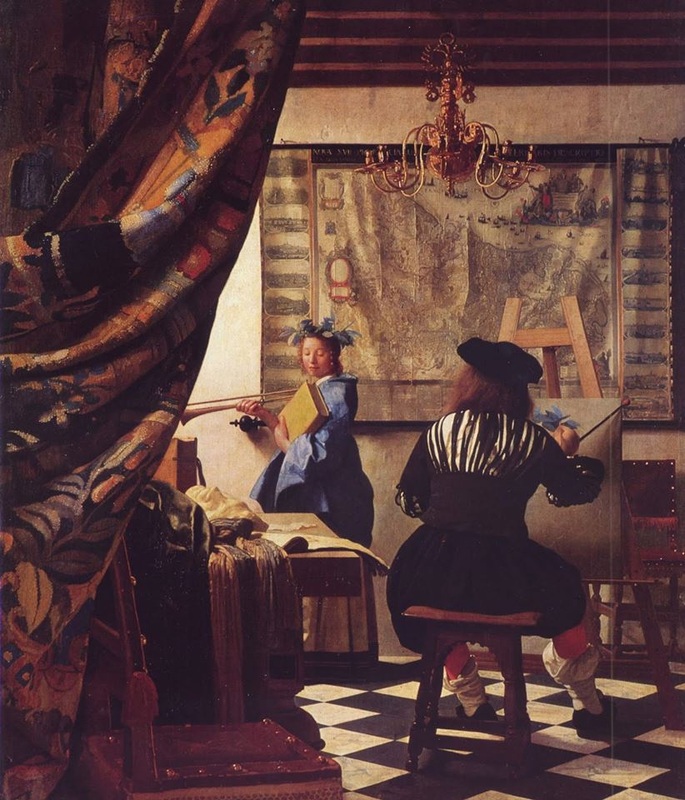
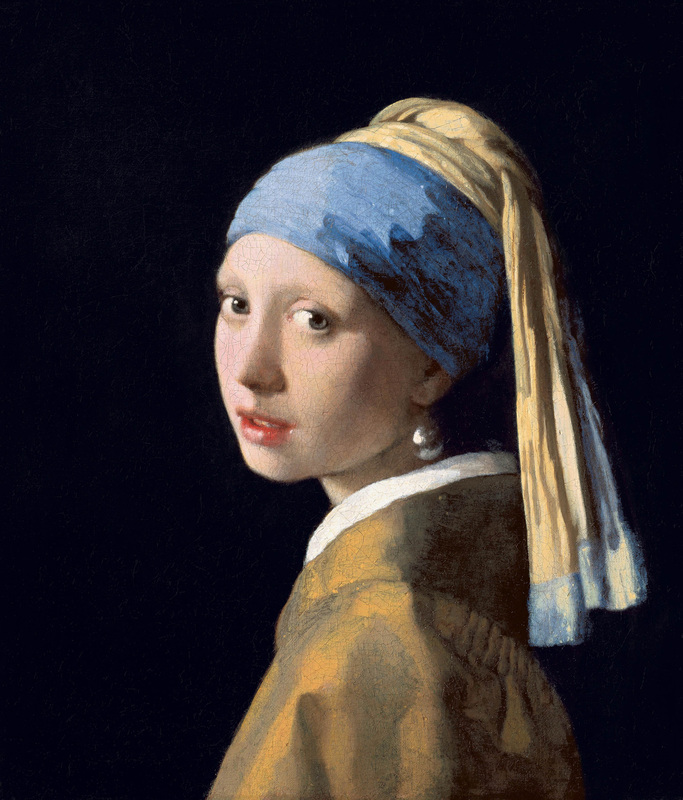
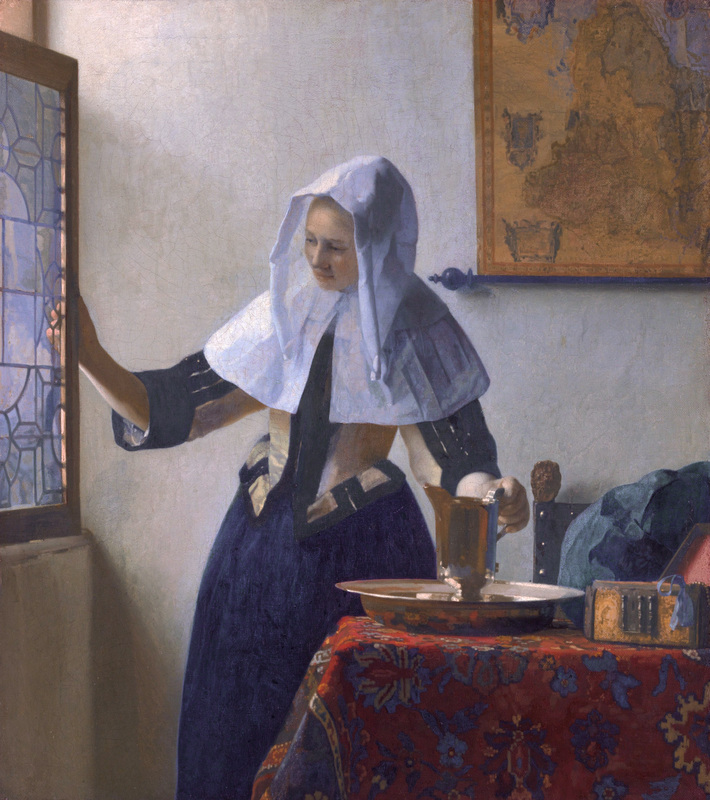
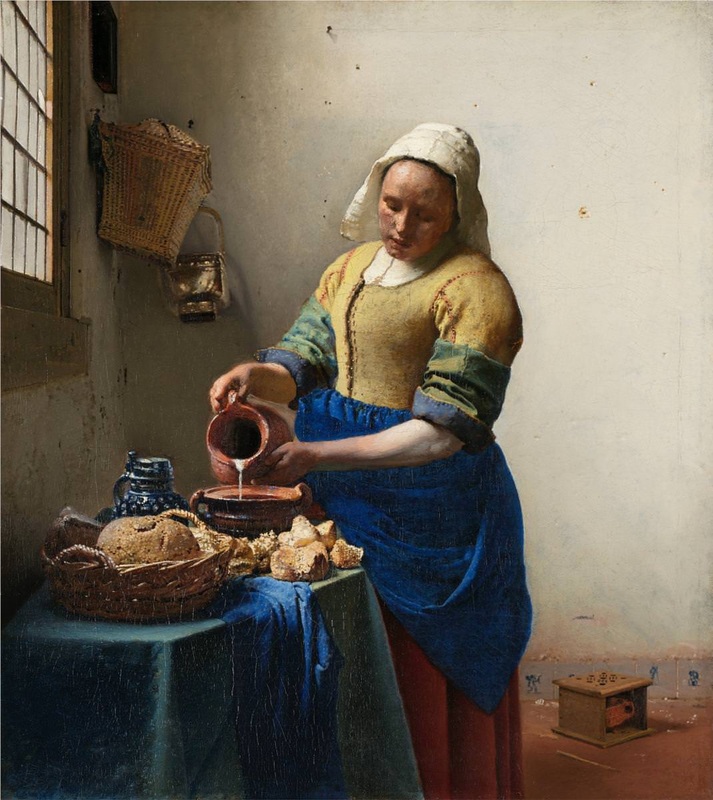
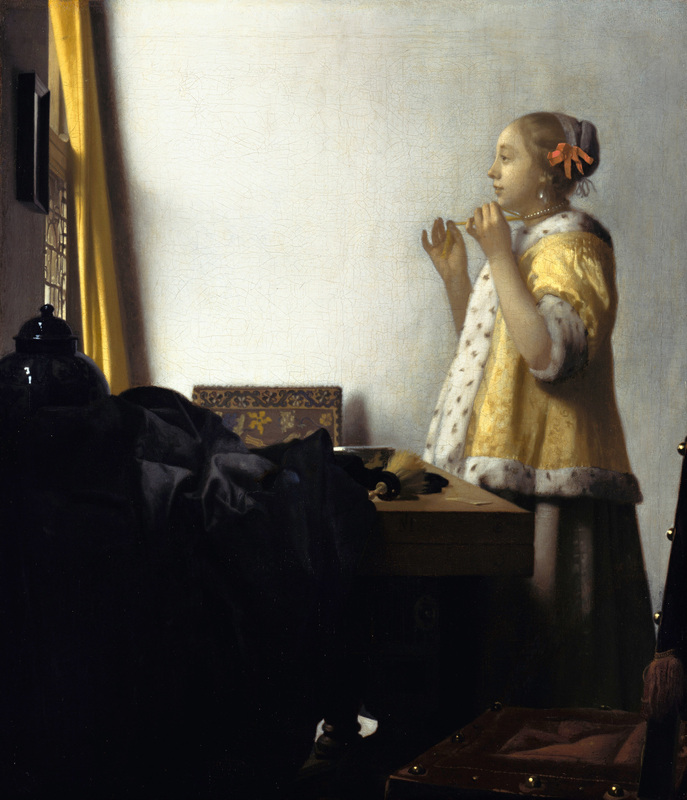

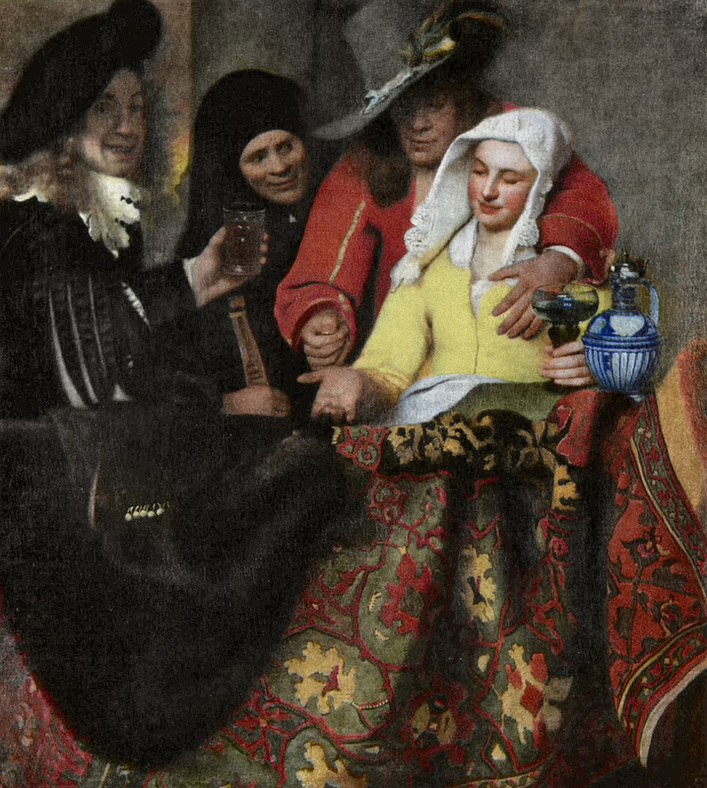

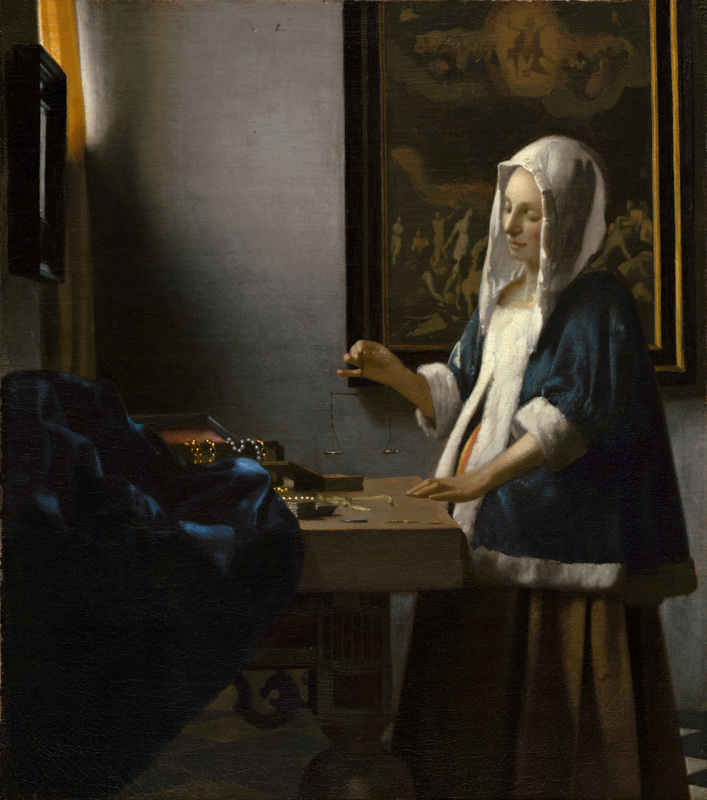
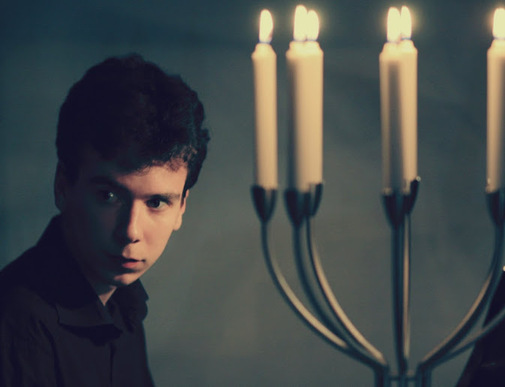
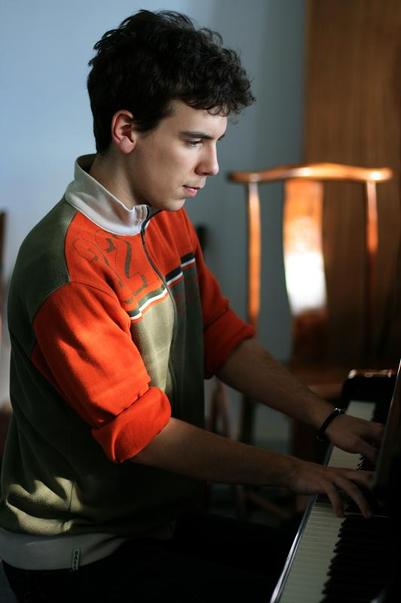

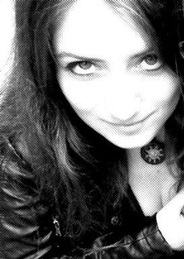
 RSS Feed
RSS Feed
